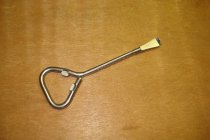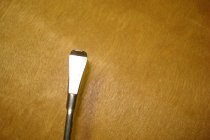German,
Yes I have read that article many many many! times, it is the article that started my quest to figure this whole thing out, I thought I recognized that Vickerman die photo but didn't want to comment until I read the article first. I was having trouble with seating depth, measured as you do from base to ojive on a .300wm the measurements were all over the place, as usual I am a extremest and nothing short of perfection is good enough, for a hunting round that is ridiculous but like I said,.....anyway after reading your article it got me really thinking, if I can't fix the die I will change how I measure bullets so I used the seating stem from my redding comp die and attached it to my Larry Willis digital headspace gauge tool and that is how I sorted bullets until a couple of months ago and it was a huge improvement over the way I had been doing it. I only compete in 1K bench rest at the moment German and I find any variable to cause problems no mater how small if it is a variable it seems to matter. My new 105 Berger hybrids have varied as much a .020 base to tip I know in your article you said that But the tip is irrelevant to the seating process and thus its irregularity can be ignored. I thought about that for a long time and although I usually always agree with you I thought you were wrong but considered what you first said,.1. What am I trying to accomplish? and decided for your needs you were probably spot on but for my needs trying to get to 5" 10 shot groups at 1K that .020 might change the b.c enough at 1K to give me to much vertical to achieve that and that is why since I have not started pointing or meplat trimming much, ( I will be soon) that I will measure bearing surface with a comparitor I use the Buhay ( Mark King ) and then I sort by bullet length, by doing this I have noticed a noticeable difference in my groups, I am not sure if it is coincidence or not, I was sorting by weight as well but did not notice any difference there, I also haven't noticed any improvement on groups on runout from say .002 to zero runout but I try to keep it as low as possible anyway. I think precision in long range shooting all the little and big things combined and if you ignore any one of them your groups will start to suffer, to what degree will vary but suffer they will IMHO, besides the normal things we have to do to get small groups I think these are the most critical for Long range for short range the list would be different,
#1 Neck tension
#2 exact powder weight ( for the same velocity )
#3 seating depth with bullets of as close to the exact b.c as possible
I also think if your jamming that maybe your seating depth is not nearly as critical as if your jumping them. Incidentally in the beginning of this post I mentioned I was having trouble with seating depth variance in my .300wm that started this whole thing,....it was a neck tension variance problem more then any other factor, once I got that resolved, most of the problem went away. I am sorry for such a long post but I thought you might find it interesting, these statements of course are only my findings and opinions which of course aren't proof of anything but they are honestly what I believe have helped me achieve my goals and I am getting better all the time from my own discoveries and the help from good friends and people like you German, thank you for all you have done and continue to do for the shooting world.
Sincerely, Wayne Bezona.
P.S, I think the K&M arbor press with force seat measurement system is the single most important investment you could ever make for long range shooting as you can monitor and sort by seating force, remember my #1 thing,... neck tension, I truly believe this is the key.












